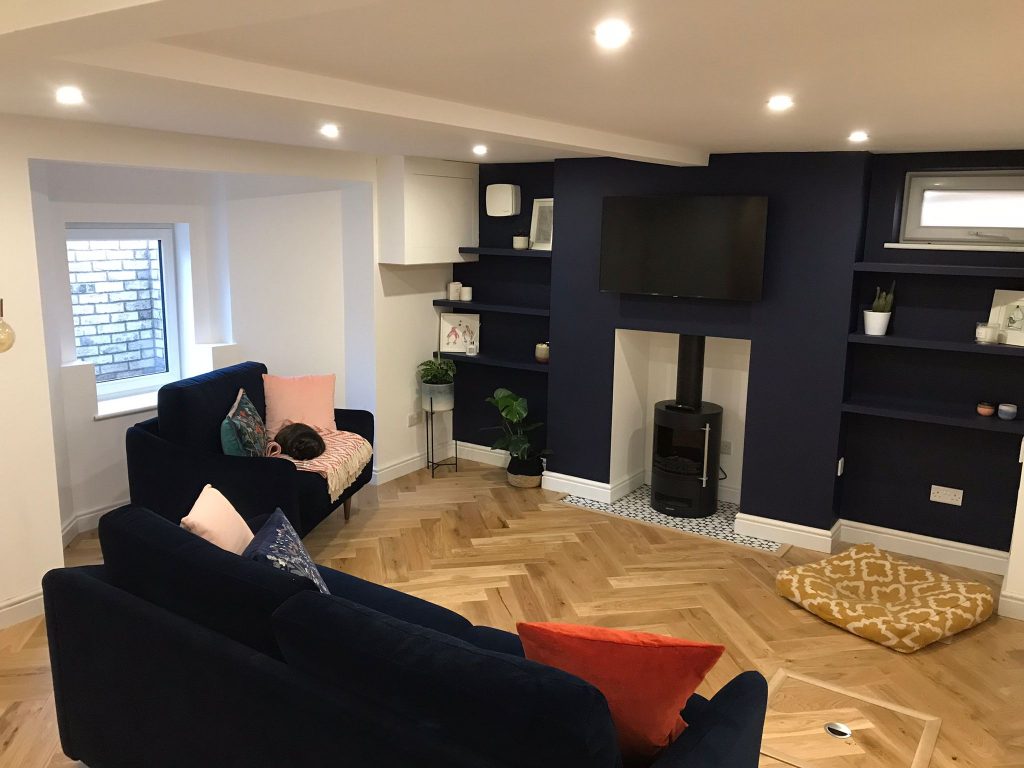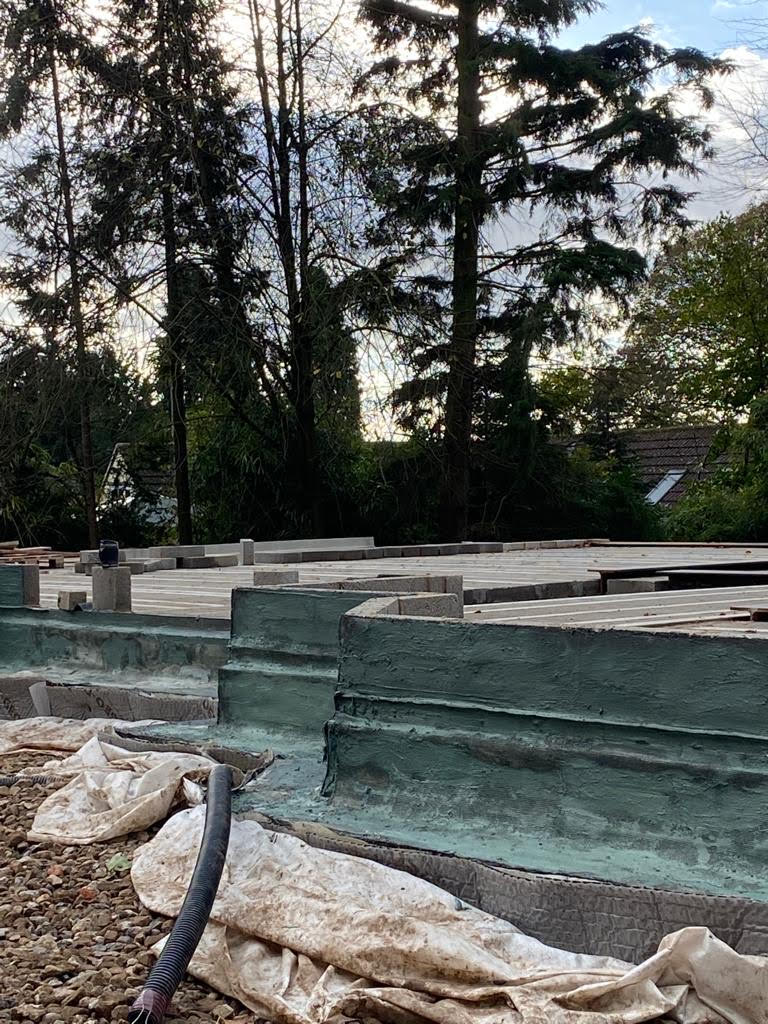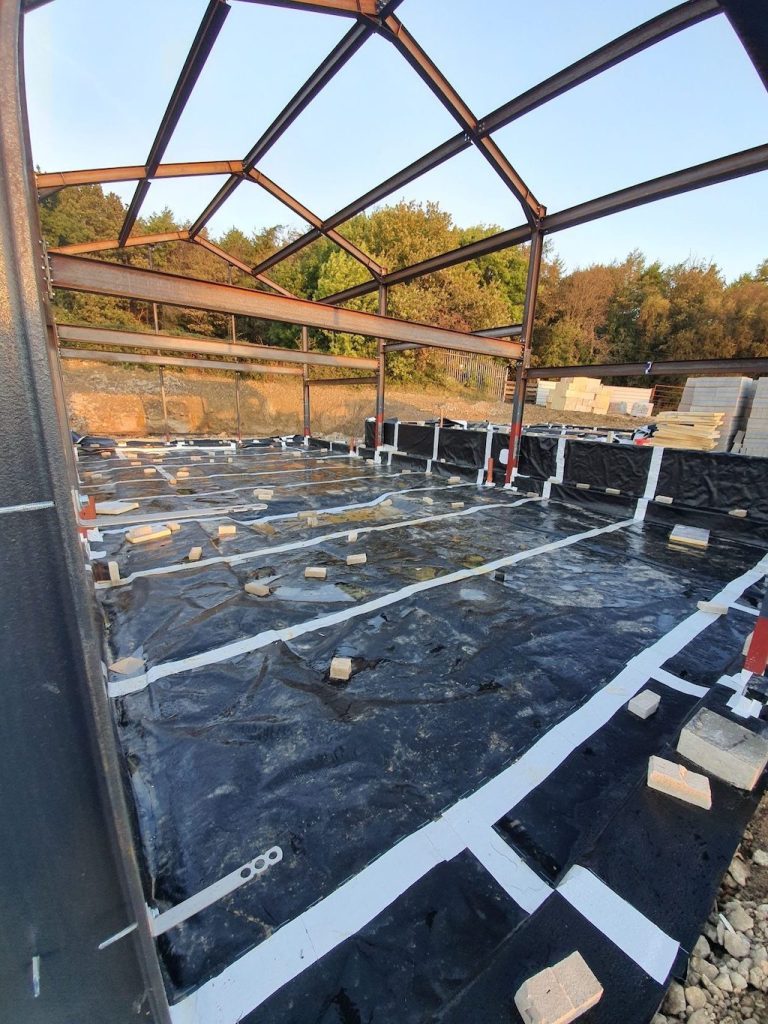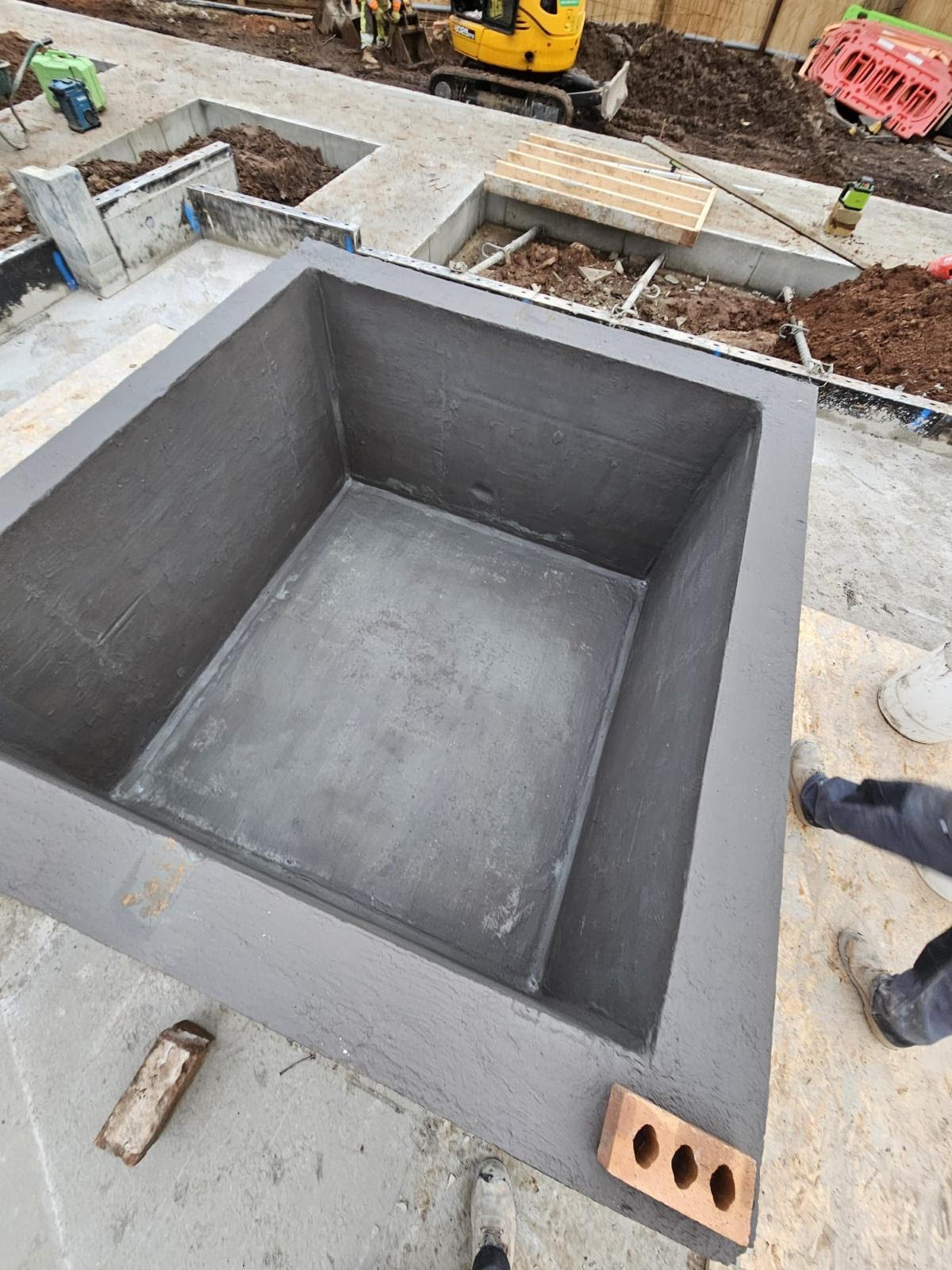The Damptec team has just finished work at a new build property in Ashbourne.
The waterproofing solution we used is defined in BS 8102: 2022 Protection of Structures against Water from the Ground as a “Grade 3” environment where no dampness is permitted and where the internal environment needs to be managed using appropriate environmental controls.
Type A and C combined waterproofing system
- Type A: Barrier Protection – external waterproofing
- Type C: Drained Protection – internal waterproofing
When designing a structural waterproofing system for a new build basement it is essential to install two forms of waterproofing as combined protection. This is because no single waterproofing system can be considered defect-free and this principle needs to be considered in the design. See excerpt from BS 8102: 2022 below, which upholds this principle.
It is worth noting that major third part warranty providers such as NHBC, Premier Guarantees and LABC have insisted for some time on the installation of combined protection as a fundamental condition of their warranty. They also require that a CSSW qualified waterproofing design specialist be involved at the design stage.
External: Type A (Barrier) protection – A barrier to water ingress applied to the outer surface of the structure (see photo).
- We installed Delta DualProof pre-applied water proofing membrane, prior to the concrete slab being poured. This is a fully and permanently bonded composite sheet that not only waterproofs but protects against gases such as radon and chemicals.
Primary resistance of of the structure was provided by Koster bitumen-based waterproofing on the positive side.
- We primed the walls by applying Koster Polysil TG500, lime inhibitor for concrete and a deep penetrating primer to strengthen and protect mineral substrates.
- We formed a 50mm fillet along the foundation toe using repair mortar. This helps shed water away from the structure.
- Two coats of Koster Deuxan-2C polymer were applied, the second following the installation of glass fibre mesh.
- Once the Deuxan has cured (following day depending on air temperature), we mechanically fixed Delta-GeoDrain Quattro membrane, with joints overlapped and sealed.
- We then applied Delta GeoDrain Quattro fixings at the top and covered with a profile strip.
- This system requires a serviceable drain positioned below the slab level and run around the perimeter of the retaining walls whenever practicable as a method of risk reduction.
Internal: Type C (Drained) protection
Secondary protection, which manages any water ingress which occurs as a consequence of an installation defect in the external membrane, was provided by a cavity drain membrane system:
Wall Cavity Drain Membranes
Walls: 8mm cavity drain membrane was mechanically fixed to all walls (floor to ceiling).
Drainage
We installed a perimeter drainage channel on the slab on the earth-retaining perimeter walls including the installation of jetting eyes.
Floor Preparation:
Lime inhibitor was applied prior to the installation of the floor membrane. We always treat new concrete. This method will decrease the danger of the new development of salt efflorescence and free lime egress, and raises the resistance of mineral substrates to freezing and thawing.
Closed Cell insulation board:
Finally we installed Newton Fibran XPS 500-C which is a 50mm deep, closed-cell thermal insulation board made from rigid extruded polystyrene foam (XPS).
By choosing Damptec for your tanking needs, you ensure a professionally managed project with robust, reliable waterproofing solutions.
Contact us today for more information and to discuss your project requirements.








